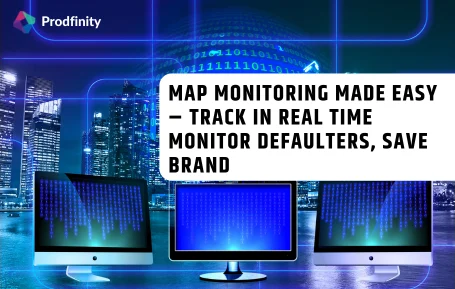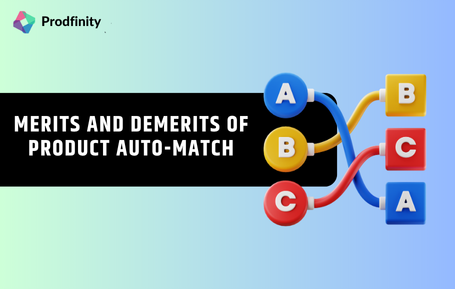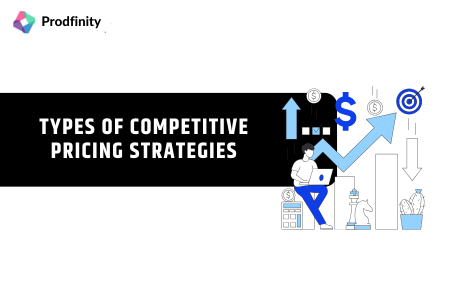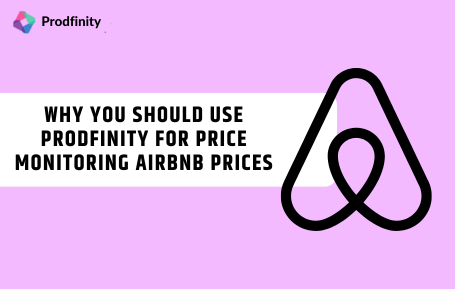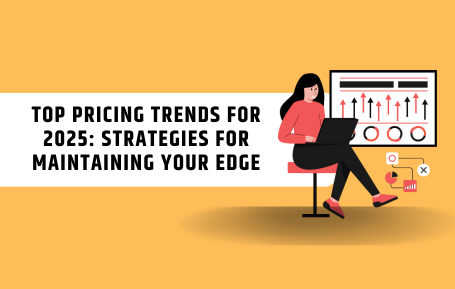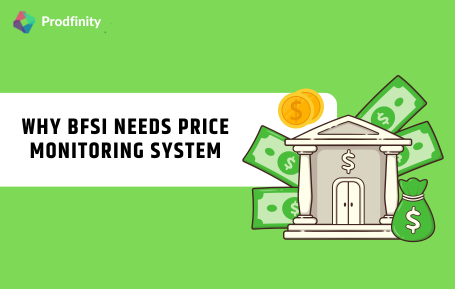Do you know what is most important thing in the market?
Well, no, it’s not prices or profit. It’s a brand.
Its true profit is the soul of any business and without it, no business can run for long, but brand is the body on which profit stays.
In more clear words, it’s not the product what people purchase it’s the brand. But building a premium brand in this competitive market is very difficult, especially when you are competing countless competitor who are spread worldwide, ready to steal your customers from all the corner of the global.
But as there are challenges in retaining your brand value, it’s not really impossible if you strategize correctly and use all the policies which can be in yours, distributors as well as customers favour.
One of those policy is MAP Policy.
Not really sure what MAP policy is and how can it help you? We got you.
In this article, there is everything you should know about MAP, from what really MAP is and its uses to its implementation, you will get everything here, in just one blog.
What is MAP
Before we dive deeper in MAP Monitoring and its importance, it is crucial to understand what is MAP is.
MAP which also known as Minimum Advertisement Price, it is the lowest price of a product which can be advertised for sales by retailers and distributors. MAP is mainly fixed by the brand or manufacturers. But its essential to differentiate between the advertised price and selling price.
Advertised Price is the price on which a product will be advertised either on broachers, televisions or websites, on the hand selling price is the actual price on which a transaction took place. So now we can understand that advertised price and selling price are different terms and can be having different amount.
Lets understand it better with an example. Lets suppose there is a dress whose MAP is 100 bucks while the retailers and distributers can’t advertise the dress lower than 100 bucks, they can actually sell it on the price lower than 100 bucks.
So now it must be clear that advertisement price should not be lower than MAP, but selling price can be different.
Why MAP Policies Important
MAP is a widely used policy which is applied by countless leading brand and companies due to some the following reasons :
Maintaining Brand Value
MAP Pricing make sure that the brand value of the company is not depleting in the market due to unreasonable discounts from the side of retailers and distributors because of intense competition in the market. It somehow provide the control of the brand image in the market to the enterprise even when the enterprise is not directly present in the market.
Protecting Retailer Margin
In this cut-throat competition in the market retailers are ready to give away their profit to gain another customer. Due to this sever competition it is hard for small retailers to survive and expand their business, but MAP policy is a saving grace in these situations as MAP monitoring not only protects brand value it also protects retailers profit margin by restricting them to lower the advertisement prices after a certain limit.
Ensuring Fair Competition
MAP Policy makes sure that no retailer, either they are small retailers or leading distributor or just a online shops gets undue advantages by reducing the price of the product as per their will to attract customers. It give fair chances to every sector of the market to grow equally, so there will not be any disbalance in the market and demands in future.
Supporting Brick and Mortar Stores
Online and cloud stores these days have many advantages from a physical store in a market, from labor costs to some to maintaining shops for customers, their expenses are way lower than other brick-and-mortar stores which can give them a chance of selling the product at lower cost than market shops. But MAP monitoring makes sure that these online shops don’t get unfair advantage on the basis of prices.
Difference between MAP, MSRP and List Price
After knowing what MAP is, it is important to understand difference between some of the similar terms and their functioning, so you don’t get confused between them.
MAP also known as Minimum Advertisement Price, which is fixed by brand or company. This is the price below which no retailer or distributor can advertise in the market place, they are legally and morally obliged to follow the MAP. Retailers has no right to undercut the prices of product for advertisement, regardless it apply no restriction on which a retailer sells the price on.
MSRP stands for Manufacturer’s Suggested Retail Price, as the name suggest this price is the suggested amount provided by the manufacturer to the retailer for their product, but there is no obligation to follow these rules and they can alter the prices according to their will.
List Price is the list of prices set by the retailer to sell all the products of they have and will be dealing on. These prices are set and modified by the retailers only and there is no say of any manufacturer about the list price of the retailer.
Below is a table to summaries all the three points with there key features or differences for understandability :-
What is MAP Monitoring
Now when you have applied MAP Policy on your product, you also need to make sure that all your retailers are following it, for fair market competition and retailers satisfaction.
The process of monitoring your retailers and all the places where your products are advertised to make sure that advertised prices are greater than or equal to MAP is called MAP monitoring.
Why do We Need MAP Monitoring
Defaulters are everywhere, from school defaulters to country and market place is no different, even the proportion differ from place to place there will be some people just can’t follow the rules and policies. These rule breakers can be a reason for your brand devaluation and diminishing goodwill of your enterprise in the market. That’s why its important for you to monitor retailers prices and advertisement to see who are not playing healthy through your brand name.
Methods of MAP Monitoring
There are mainly two methods of MAP Monitoring which are used in today’s world for MAP Monitoring.
- Manual MAP Monitoring :- In this someone checks the advertised prices of the products from all the retail channels and e-commerce sites then they will make a list of MAP defaulters of each with respect to all the product before taking any actions. While this method is used from decades to check the defaulters its not efficient enough according to todays world as they are not only time consuming and repetitive, this method is also prone to human errors.
- Automated MAP Monitoring tool :- There are different platform in today’s market which do MAP Monitoring for you through there MAP Monitoring tools, for example prodfinities MAP Monitoring tools which monitors all your retailers and provide you list of defaulters on real time, so you can always watch out for rule breakers.
How MAP Monitoring Tools Works
To avail Automated MAP Monitoring tool services you need to set up some rules and work few things out before we take off the monitoring burden from your shoulders. Follow the following steps, so you can set up an smooth and effective working MAP Monitoring tool with us.
Input MAP Rule
You must have documented MAP rules of each and every steps so you can guide and warn retailers accordingly. You just need to put those MAP rules of each and every product in our tool so that AI based MAP Monitoring tool can identify MAP defaulters according to your rules.
Crawl Online Sites
Scraping the online sites will be the next which MAP monitoring tools do, you can either import websites of your own choice or we starts monitoring the e-commerce giants like Amazon, eBay etc.
Detect Validation
If MAP Monitoring software found any of your product on any of those sites, it crawls into its description and other information to find out the price of the product they are selling on. Then it will compare these prices with your MAP price to see if there is any defaulter or not.
Generates Alters / List of Defaulters
If there is any defaulter of MAP, then MAP Monitoring software will add their name and other information in the list of defaulter which you can export when ever you want. In addition to that, MAP Monitoring software can send alters in emails and websites whenever they find a new defaulters so they won’t unnoticed by you, if you have activated the alter feature of our tool.
Enforce
Our MAP Monitoring tool can also enforce MAP rules to your defaulters by sending them warning with detailed information of listing price and product, while as according to your MAP rules it can also restricts the distribution if a particular retailer violated MAP policy multiple times.
Common Violations of MAP Pricing
There are many retailers who use different tactics to violate MAP policies for their own benefits and but they can be very harmful for your brand value and market goodwill which will reverse your place in the marketplace. Some of the most commonly practiced violation are listed below.
Advertising Below MAP
There are many retailers who list the prices of your product in leading e-commerce websites like Amazon, eBay, Walmart, etc, lower than your MAP policy. These acts are done either during low pace or when demand is not much, attract customers or increase sales.
Bundling Product to Create “Hidden Discounts”
You must have seen a combo of multiple products which cost way less than the cost of individual products if you purchased them separately. Have you ever wondered how is it possible and what would be the price of each product if you make a bifurcation. Well yes this is a violating MAP policy by not showing products prices separately and clearly. These hidden discount could cost you much more than just cash, these can stain your reputation in the market and maybe reduces the premium-ness of you product and brand.
Flash Sales and Promotional Prices Below MAP
Ever saw the after winter sales or end-of-season sales where you find many product in half prices and sometimes even cheaper than that, these sales encourages impulsive buying and most of the retailers violates there MAP Polcies, so make sure you keep an good eye on them.
Drawbacks of Manual MAP Monitoring
While manual MAP Monitoring technique was being used for decades in the marketplaces, there are some drawbacks if you implement this technique due to the massive shift of physical market to e-commerce, if you pin point some of those drawbacks, lets discuss them together.
Countless Sites to Monitor
When e-commerce started to take over the brick market, the scope of growth was limitless, internet knows no geographical boundaries and so does your products too, but when you have to track all the activities of each one of your retailers then it becomes a difficult job and so does it becomes impossible if your retailers deal in e-commerce platforms, there are countless online shopping stores for consumers and your retailer can advertise on any of those account. That’s one of the greatest limitation of using Manual MAP Monitoring.
Market Place Adopting Dynamic Pricing
Dynamic pricing is the process of changing prices of products on the basis of dynamics of market which can differ from time to time. Every industry these days are adopting automatic dynamic pricing tools, due to which the prices of products can changes from hourly to daily basis. In this case it will be next to impossible for the user to check prices from all the websites on daily basis.
Wanted to know more about Dynamic Pricing, check out this blog What is Dynamic Pricing and How Does It work
Finding an effective Dynamic Pricing tool with best suggestion and services, check out our Dynamic Pricing service.
Marketplaces Makes it Difficult to Identify Unauthorized Seller
There are many e-commerce platforms which does not disclose their suppliers details and the one who do normally make it a bit difficult and long process, which can cause lot of exhaustion and sometime irritation, making it not really a easy job to know about the supplier and your MAP policy violator.
Advantages of Automated MAP Monitoring
After understanding the drawbacks from Manual MAP Monitoring, it is essential to know what more perks you will get if you implement MAP Monitoring Tool and how it can shift the load off monitoring your violators from you. Below are some common benefits you will choosing any MAP Monitoring tool
Real-time Monitoring
Automated MAP Monitoring tool makes sure that your lists of violators are up-to-date and being included all the violators who are implementing dynamic pricing and in that process not following your MAP Policies.
Getting real-time data is good enough but in addition to it, automated MAP monitoring tool can monitor countless sites and can fetch MAP defaulters from thousands of listing to make your analysis effective and effortless.
Violation Alerts
You don’t have to monitor the app every now and then to check if the list of defaulters was changed or not. Every time a new defaulter is added in the list an alert on your website or email will be send as per your setting to notify you about defaulter.
Brand Protection
“Knowledge is Power”
Automated MAP Monitoring Tool is an effective way to be powerful as it protect your brand as you can monitor defaulter on real time and take actions accordingly to protect reputation of your brand in the market place.
Documented Proof and Violation History
With automated listing of defaulters can be proved to be a reliable proof if you seek for legal justice on the violators or just wanted to confront the the retailers. In addition to that, the retaining the violation history of retails can let you understand which retailers are really damaging your brand image.
How to Implement MAP Monitoring
Even when there are always people who don’t want to follow rules, there are some suggestions from our side which can help you as well your retailers to follow MAP Policies and reducing the gap between manufacturer and retailers.
Create Clear Policy
Create a clear documentation of policy with easy to understand language, so there should not be any confusion or doubt because of documentation to the retailer as well as there should not be any gap or loopholes in the policy documentation.
Communicate Your Policy
Documentation is a good step but its not enough, you should held gathering and seminars for your retailer to explain your pricing policies and make sure they don’t have any further doubts regarding them. Even you can get effective suggestions from there sites too.
Monitor Continuously
Monitor your retailers acts, on regular basis to make sure none of them are violating MAP policy and create a healthy marketplace for your brand.
Act on Violations
If you find someone violating your policies on regular basis, take an action against them to set an example. Setting an example is very important to instill fear in retailers of the consequences if they don’t follow the MAP Policy, which will prevent other retailer to violate your policy.
Maintain Relationships
Even when setting an example is important, there could be an exception of every situations, before taking a action against any violator you should provide them fair chance of explanation, so that you can understand what make do such an act.
Conclusion
After analyzing every aspect of MAP monitoring, we can say that your brand value depend on the price in which your product is being advertised and sold eventually. So you need to make sure your products are as premium as you wanted to make your brand.
For that proper implementation and monitoring of MAP Policy is an essential work, especially for all types of manufactures.
Wanted to experience our MAP Monitoring services, try a free trial.
If you wanted to know more about business related technologies and tool, do subscribe our weekly newsletter.


